We need a mobility revolution!
Climate-friendly alternatives for the mobility of the future
by Sabrina Wagner, BSc
Self-determined mobility is an integral part of everyday life and a convenience that people hardly want to do without nowadays. However, ever-increasing traffic is responsible for 30% of Austria‘s CO2 emissions [1]. A shift from undivided, motorized individual transport to climate-friendly alternatives is urgently needed. What (transport) means can we use to initiate the mobility revolution together and to change mobility habits towards environmentally friendly alternatives?
Table of contents
- The problem: CO2 and inefficiency
- Public transport
- Carpooling
- Car-Sharing
- Examples of research projects on sustainable mobility
- Sources
- Author
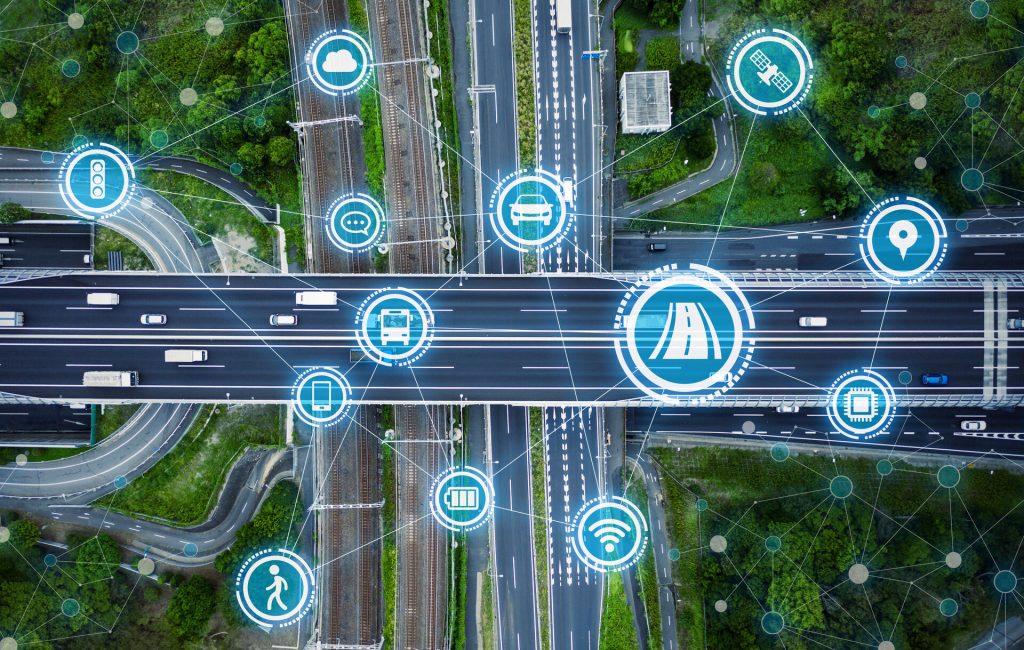
The problem: CO2 and inefficiency
More than 5 million passenger cars in Austria alone – equivalent to 0.6 cars per inhabitant regardless of age, driving ability or driver‘s license ownership – emit 17.13% of Austria‘s CO2 emissions [6] [2] [3]. However, in addition to the ever increasing number of passenger cars in Austria, the occupancy rate is also decreasing: in 2017, the average number of occupants in a vehicle was 1.15, which means that vehicles carry fewer and fewer people – usually even only one person – and still take up space and resources [4].
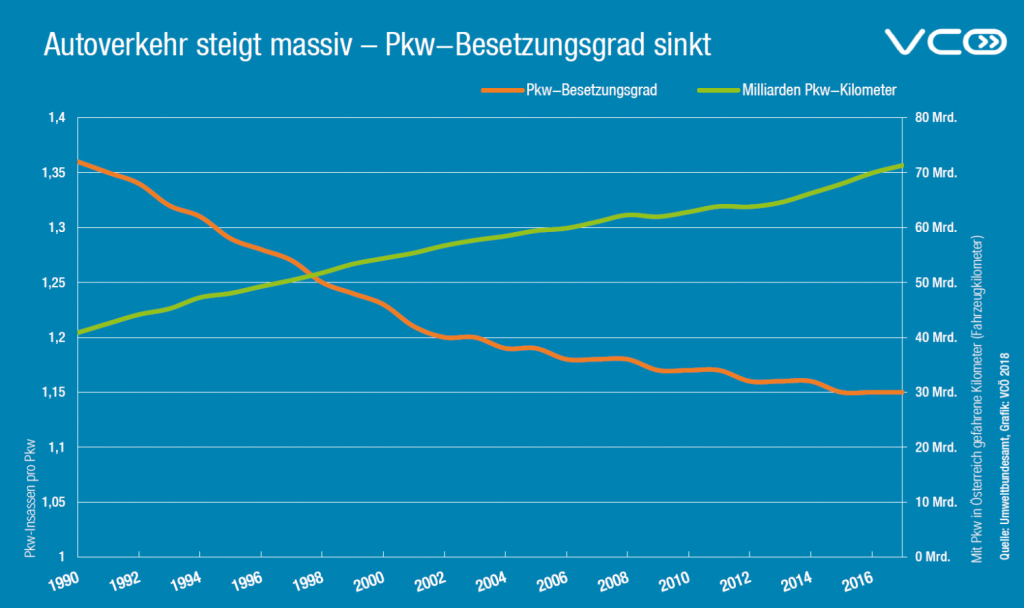
Figure: Occupancy rate of cars over time and number of kilometers driven
Source: VCÖ – Mobility with Future
Public transport
The classic alternative to your own car is public transport, such as buses or trains. Especially in recent years, the public transport network has been greatly expanded to increase the attractiveness of this sustainable mode of transportation. In addition, various tariffs are offered for commuters and frequent travelers, such as annual passes and semester tickets. Since public transport in metropolitan areas can already be used very flexibly and is financially very attractive, it represents a real alternative to undivided private transport.
In rural regions, however, the range of services is not yet developed enough in many places to meet the requirements of flexible and convenient public transport. This flexible need for mobility is intensified by current developments such as flexible working hours and home offices, and is often not covered for all interest groups by public transport in rural areas, which is primarily designed for school transport.
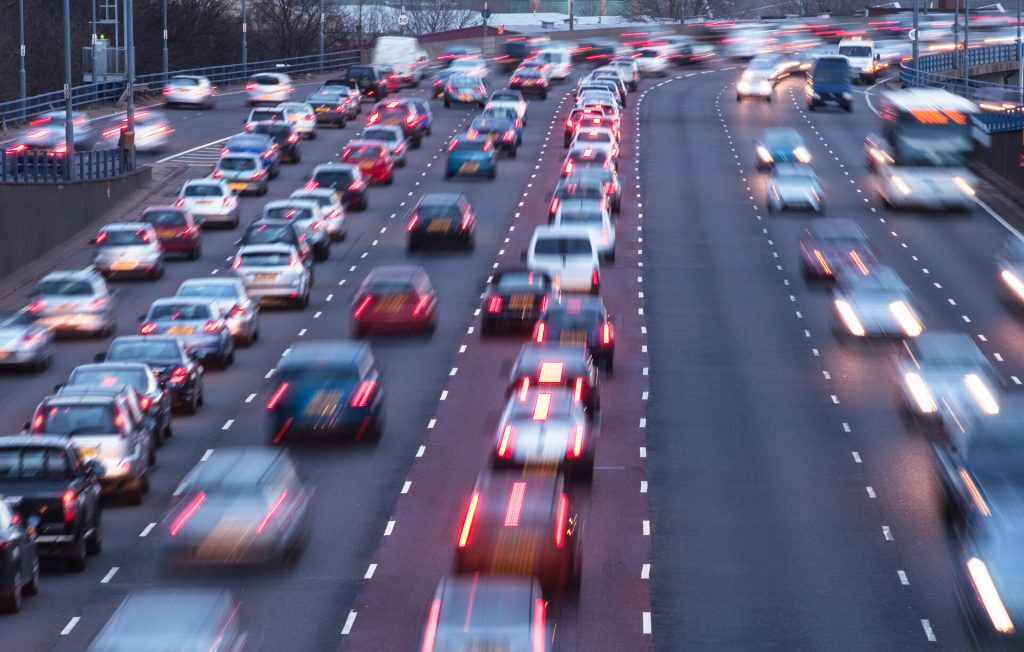
Carpooling
Carpooling services, as well as carpooling in general, are an option to cover everyday and recurring routes in a cost-effective and quick way. To share the commute to and from work with colleagues, different providers offer ride-sharing services as part of the commute. These regular ride share services cover only part of the mobility needs, but in addition to the financial and environmental incentives, they can also reduce the need for a second car in the household. For businesses, corporate ride share programs also offer social and financial benefits, such as increased cohesion and reduced parking costs.
Shaped by the digital age, there is a wide range of ride-sharing services and apps available on the market, such as Carployee, Foahstmit, Ummadum or Hey Way. This (local) fragmentation of the various solutions leads to segregated groups of users and, as a consequence, to a smaller number of routes offered. Other providers, such as BlaBlaCar with its focus on long-distance routes, can be a supplement for routes not covered by public transport.
In addition to digital ride-sharing services, there are also offers for analog and spontaneous ride-sharing, such as the “Mitfahrbankerl“ offered by the Freistadt energy district. They are intended to replace classic car hitchhiking and offer a flexible way to ride along.
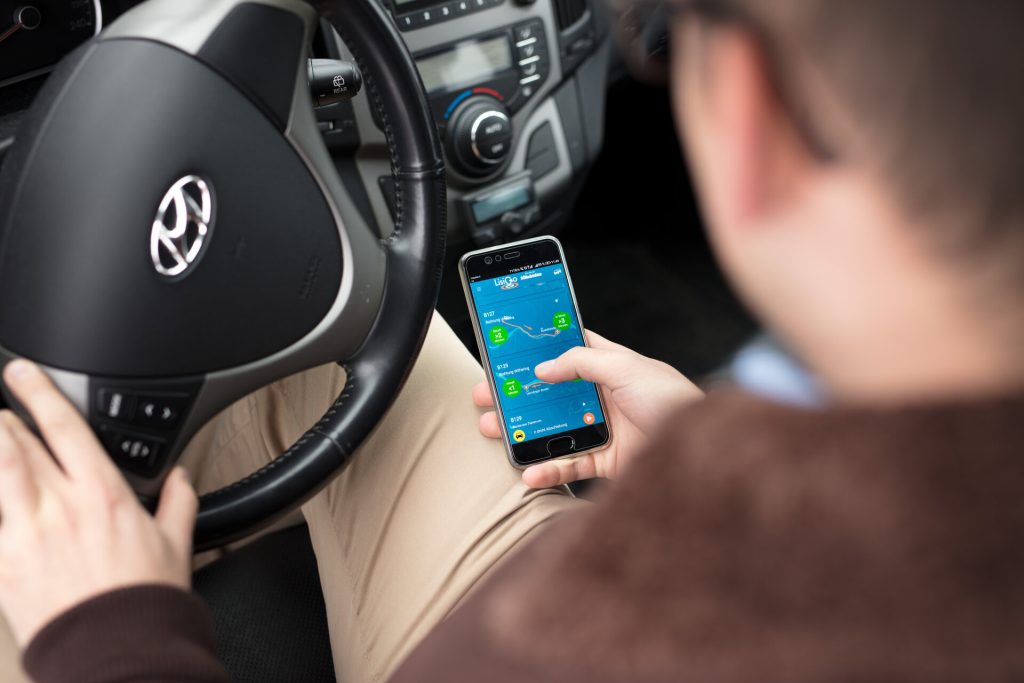
Car-Sharing
Almost exclusively, the question of environmental impact in the area of mobility considers fuel consumption and the emissions caused by it. However, in addition to the problem of low occupancy rates and the resulting high climate impact, there is another factor: vehicle production itself. A vehicle causes greenhouse gas emissions to the extent of several tens of thousands of kilometers driven already during production, without ever having been driven a kilometer [7].
Car-Sharing offers a good alternative to buying one‘s own vehicle, in that a passenger car can be rented flexibly for the required duration. Car-Sharing is an optimal complement to public transport, because when an individual vehicle is needed (e.g., to travel to leisure activities that are not open to the public), different types of vehicles can also be rented flexibly over time.
There is also a high degree of fragmentation among Car-Sharing providers and a confusing information situation for customers due to the different payment methods and availability. There are both private providers, such as on the Getaround platform, and public providers, such as ÖBB Rail&Drive, TIM or MühlFerdl. These also have different objectives, such as local supplement to public transport and/or replacement of the second car or tourism-focused offers as a supplement to public travel. Basically, two types of Car-Sharing are distinguished: station-based and free-floating Car-Sharing. The difference is that in station-based car sharing, several fixed stations are defined by the provider where the vehicles can be both picked up and dropped off, whereas in free-floating car sharing, the vehicle can be parked anywhere within a zone. The station-based approach is most widespread only in some metropolitan areas is free-floating car sharing offered.
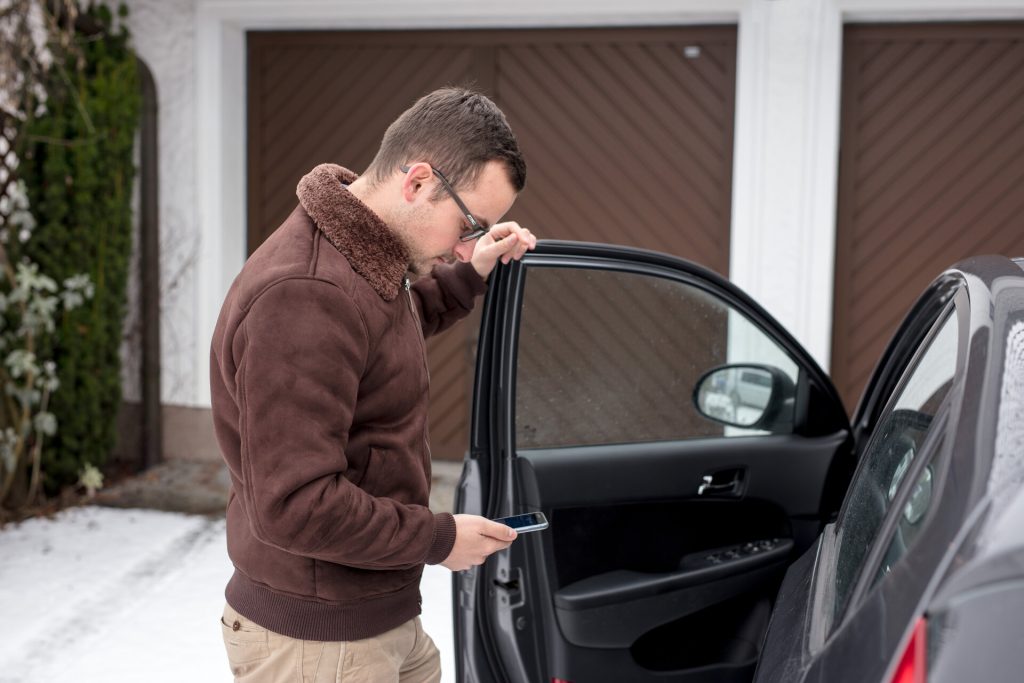
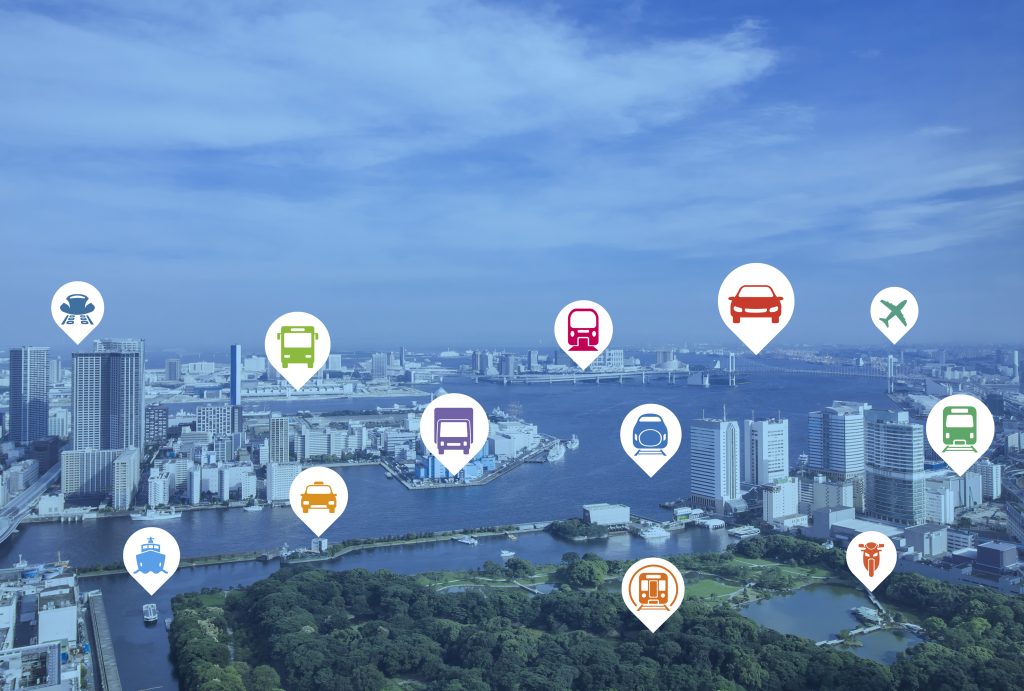
Examples of research projects on sustainable mobility
RISC Software GmbH is strongly concerned with future-proof and sustainable mobility and is working on several projects with the aim of developing sustainable, inexpensive and uncomplicated solutions for the current challenges in individual transport.
EVIS.AT
The research project EVIS.AT (Real-Time Traffic Information Road Austria) and the traffic data obtained from it serve as the basis for the other projects mentioned. In
EVIS.AT several fleets (truck, car, a combination of truck and car, emergency vehicle, cab) were acquired for a data collection and route sections were equipped with sensor technology (VDL/counting loops, Bluetooth) for traffic counting. The aim of this project is to provide real-time traffic situation information for the region of Upper Austria. This traffic situation is also an integral part of the Austria-wide traffic situation of VAO.
LisiGo
The app LisiGo is the traffic jam and news portal of OÖNachrichten. It is used to avoid traffic jams on the way to and from work by calculating an optimal route for a user-defined route based on the current traffic situation. In addition, a forecast for a trip for the next 30 minutes can also be calculated to compare the traffic situation and find the optimal time for the trip. LisiGo thus contributes to the reduction of traffic jams or stop-and-go traffic and subsequently to the reduction of CO2 emissions.
DOMINO
The lead project DOMINO (Hub for Intermodal Mobility Services and Technologies) aims to enable the design of a sustainable, end-to-end and publicly accessible mobility management “Mobility as a Service“ (MaaS) in Austria. Three different pilot regions (Upper Austria; Lower Austria, Salzburg) will be set up to develop, test and finally integrate new mobility services. The laboratory environment in the pilot region Upper Austria serves as a basis for the optimization of daily commuter traffic. This optimization will be achieved by increasing the occupancy rates of vehicles (through a ride-sharing exchange), promoting the switch to public transportation, reducing congestion (CO2 emissions) in the Linz metropolitan area, and attracting employers in the Linz metropolitan area by improving mobility services. In the course of the project, RISC Software GmbH is developing a ride-sharing pool that aims to link the various ride-sharing solutions in order to establish ride-sharing as an integral part of the mobility mix.
Sources
[2] Umweltbundesamt, 2018b
[4] Trafico, Umweltbundesamt, VCÖ 2018
[5] Greenpeace, Städtische Mobilität nach Corona: Auto-Kollaps oder Fahrrad-Boom, 2020
Contact
Author

Sabrina Wagner, BSc
Software Developer


